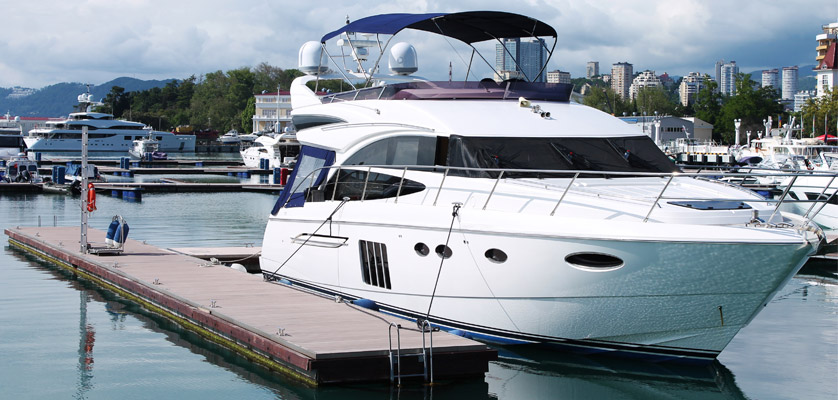Robert William Thomson: The Hydraulic Dock
Robert William Thomson was one of Scotland's most prolific inventors, yet his greatness went largely unrecognised until after his death. His talent was even more amazing, due to the fact he left school at 14 and taught himself chemistry and astronomy, before embarking on his incredible career.
Born in Stonehaven, in north-east Scotland, in June 1822, he was the eleventh of 12 children. He was told by his father, a woollen mill owner, to study for the ministry, although he struggled to learn Latin. Instead, he left school and became apprentice to a merchant, after being sent to live with his uncle in Charleston, in the United States.

© lenoraa / Adobe Stock
After two years, Thomson returned home, as being a merchant didn't appeal to him either. He made the acquaintance of a local weaver, who had a knowledge of mathematics, which he passed on to the teenager. After teaching himself chemistry and astronomy, he became interested in inventing useful items.
He received a workshop as a gift from his father and soon, the teenager had redesigned his mother's washing mangle, creating a more effective method of passing the wet garments through the rollers. He also designed and manufactured a ribbon saw and went on to create and build a working model of an elliptic rotary steam engine.
Civil engineering
With a great thirst for knowledge, he became an engineering apprentice in Dundee and Aberdeen, before joining a Glasgow civil engineering company. During his time as a civil engineer, he invented a safer method of detonating explosives in mines, reducing the loss of life in future.
After working as a railway engineer, he set up his own railway consultancy, proposing the Eastern Counties Railway line, which Parliament accepted and developed.
He patented a pneumatic tyre for carriages at the age of 23, but his invention was way ahead of its time, as it was before motor cars were invented, so it became nothing more than a curiosity.
He also invented the fountain pen, before becoming the engineer on a sugar plantation, where he radically improved the efficiency of the machinery. He also developed the first working mechanical road haulage vehicle, the steam traction engine.
To enable the heavy steam engines to travel on the roads without damaging them, he then developed solid India-rubber tyres. Known as the "Thomson Steamer" his vehicle was exported all over the world.
Hydraulic dock
One of his major inventions was the hydraulic dry dock. Used for marine applications to lower vessels into and raise them out of the water, the equipment can be used when a vessel needs examination and repairs, for example. Invented in the 1850s, when he was working in Java at the sugar plantation, he also designed a portable waterside steam crane during the same period.
It is believed he designed both pieces of machinery to combat problems caused by the government in Java, as officials refused to permit any heavy equipment or machinery to be left on the water's edge, believing it to be hazardous to local people.
By 1860, a dry dock using the same principle had been constructed for the French government at Saigon and a second was built for a company at Callao, using the same plan.
Supported by cast-iron pillars, the platform is used to secure the vessel and is raised or lowered by an operator using hydraulic power. The hydraulic press is usually worked by steam, with the cylinder of the press being hung on trunnions.
In lowering a vessel into the water, the operator can control the platform's speed with ease, increasing or reducing it as required. The whole operation can be carried out in a steady manner and with precision.
Benefits
A hydraulic dock has many benefits, not least of which is its cost-effectiveness, as it is relatively cheap to construct. Easy to operate and extremely reliable, there is no unnecessary strain put on the vessel by hauling it out of the water, as the platform keeps it steady and level. A hydraulic dock also provides superior facilities for working on the craft when it is raised out of the water.
Since Thomson first designed the hydraulic dock in the 19th century, using his engineering expertise, the same principle has continued to be used to this day. Now, any size of ship or boat can be lifted, including large and unusually-shaped vessels.
Modern-day use
Recently, Stena Line faced the challenge of having one of its ferries repaired. The ferry in question was a massive catamaran, constructed from aluminium and epoxy. It weighed 3.14 tons, was 110 metres long and 40 metres wide, so it was no mean feat lifting it out of the water without damaging it.
To find a solution, Stena Line devised a special method, using a massive hydraulic lifting system, comprising 10 concrete towers, each of which was 10 metres high, with a steel carrying frame on top. The operator was able to manoeuvre the ship very precisely above the towers.
Then, the dock was slowly emptied to allow the necessary repairs to be carried out. The second that the ship’s bottom (which was supported in between two floats) almost touched the towers, the plungers of all 40 hydraulic cylinders were pushed out. The cylinders were operated from the quay.
Each cylinder plunder was pumped out until the carrying frame touched the bottom of the vessel. Any remaining water was pumped out and the vessel was mechanically locked in place. Once the repairs had been completed, the process began again, in reverse order, to lower it safely back into the water.
The fact that Thomson's design is still used today, after being continually developed over the years, shows that he was way ahead of his time.
Established over 35 years ago, Phoenix Hydraulics provides full engineering solutions – we also stock more than 70,000 hydraulic components for fast delivery.
Please contact us for more information on our full range of hydraulic products and services.


